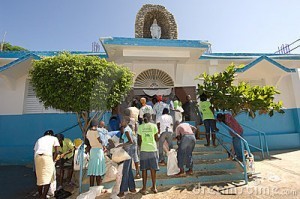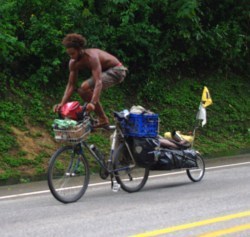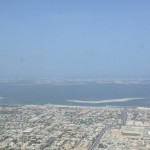Rolf Potts's Blog, page 92
June 1, 2012
Borderlines and Strange Maps
Vagablogging :: Rolf Potts Vagabonding Blog
 I “discovered” the New York Times Borderlines blog last week, when a piece about Transnistria — a territory east of Moldova — caught my eye. I rarely come across any mention of Transnistria, so it was especially unusual to see it on the New York Times homepage. Turns out that Frank Jacobs, the author of Borderlines, has been writing fascinating posts each week since Oct 2011. I’m just now catching up. Here’s the official blog description:
I “discovered” the New York Times Borderlines blog last week, when a piece about Transnistria — a territory east of Moldova — caught my eye. I rarely come across any mention of Transnistria, so it was especially unusual to see it on the New York Times homepage. Turns out that Frank Jacobs, the author of Borderlines, has been writing fascinating posts each week since Oct 2011. I’m just now catching up. Here’s the official blog description:
Countries are defined by the lines that divide them. But how are those lines decided — and why are some of them so strange? Borderlines explores the stories behind the global map, one line at a time.
This blog should definitely be of interest to travelers, especially those who seek out unusual destinations. Incidentally, Jacobs is also the author of the amazing site Strange Maps, which has been featuring unusual maps since 2006. (He has a 2009 book with the same title.) Some of my favorite posts include The World on Your Shoulders: Map Tattoos, The United States of Autocomplete, and Just My Plug: Socket Map of the World.
And while we’re on the topic of cartographic curiosities, I highly recommend The Map As Art: Contemporary Artists Explore Cartography by Katharine Harmon. It’s my current coffee table book, and it nicely complements the 6 ft x 10 ft cartographic masterpiece hanging on my living room wall: the National Geographic Executive Wall Mural Map.
Original article can be found here: Borderlines and Strange Maps
May 31, 2012
Volunteering Abroad
Vagablogging :: Rolf Potts Vagabonding Blog
The past few posts in the “summer work abroad” series have dealt with teaching ESL and work-stays as avenues to make a buck abroad in the summer months (or any month, really).
This third entry will be a bit different. In the rare case that you don’t need to make cash while spending a month or a season abroad, volunteering can be a helpful way to experience a culture first-hand in the process of doing some good. In recent years this approach to travel has gained in popularity. Volunteering’s three-for-the-price-of-one deal is attractive: The opportunity to get to know a culture, make new friendships, and have an adventure while doing a noble deed that’ll look good on the CV when the summer’s over.
And you might even get a nice tan.
Generally, volunteers don’t need special skills, except for medical projects in the Third World. Most programs are just searching for diligent, enthusiastic helpers looking to make a difference to those in need around the globe.
Opportunities can range from building homes for flood victims in humid Southeast Asia to planting crops and digging wells for clean drinking water in parched African villages. Positions helping with conservation and wildlife programs are available too.
Some first-rate organizations always looking for volunteers around the globe are Peace Corps, Doctors Without Borders, American Red Cross, and United Nations Volunteers among others. They seek volunteers to fill a critical void in the fields of environmental research, conservation, education, and community development.
More culturally-related opportunities can be in had too, especially in Europe, like digging at an archaeological site. I did this at the Shakespeare Home archaeological excavation at the writer’s former homestead in Stratford-upon-Avon, England (more about this cool experience in a future post). I made friends I otherwise wouldn’t have met and held a long-buried piece of the legendary author’s home in my hand.
There are dozens of helpful websites that can help you sort through the enormous menu of options. Many of them can parse the possibilities for people looking to volunteer in everything from medical assistance to woman’s empowerment for a week, a whole year or anywhere in between in scores of countries.
Some good resources include: http://www.goabroad.com/volunteer-abroad (great site with over 27,000 opportunities abroad updated daily), http://www.gviusa.com/ (a non-political, non-religious organization running over 100 programs in 25 countries), http://www.unitedplanet.org/volunteer-abroad (they’ll help to find a project in most categories in up to 40 countries), http://www.serveyourworld.com/articles/264/1/Free-Volunteering-Abroad (a well-run site with links to lots of excellent organizations and projects).
If this piques your interest, find a place and a position to plug into and get going. You’ll get as much out of it as you’re willing to put into it. Be ready to get your hands dirty and sweat for free, and make a difference.
Original article can be found here: Volunteering Abroad
Useful websites to help prepare your Indian vagabonding
Vagablogging :: Rolf Potts Vagabonding Blog
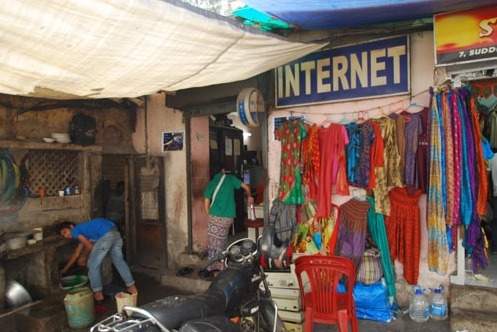
Being at the end of a four months stint across most of Northern India, I feel obliged to share a bit of technical tips to make your trip in this kaleidoscopic country a bit less daunting, and much more rewarding.
As the biggest problem in India is the human number, the crowds and the mess, I want to introduce a few websites which may help you avoid almost totally the unpleasant hassle you may face when pushed from all sides at every ticket counter in the country. Of course, a bit of advanced reservation is required.
Indiamike.com is possibly the most updated source of information on every corner of the Subcontinent. Organized In many message boards dedicated to different areas, states or topics, it is the best because it comprises a large number of Indian users who help navigate and overcome the obvious language barriers. You will not be able to purchase your tickets here, but the wealth of information you will find is enough to make it my number one Indian consultant. Most likely you will not have to open up a new thread as most of the general information is already there, so just search for it.
Cleartrip.com and makemytrip.com are, or at least used to be until last March, the handy solution for online rail bookings. You probably already know that India has an extensive railway system, one of the best in the world. What you may not know, however, is that it is extremely hard to book the tickets you want on the dates you need because booking is open nationwide: this means that anyone, anywhere in India can book a seat or berth on any train on any route in the whole country!! This makes things very hard when it comes to confirm your seat or sleeping berth. Furthermore, if you have ever experienced an Indian railway station ticket counter at least once, you may know better that, besides the customers’ hassle, you will have to fill up forms, sometimes present photocopies of your passport and visa, and have to deal with impolite clerks that will give you a few seconds before turning to the next screaming customer. For all these reasons, these two websites provide a reliable and fast way to get confirmed tickets online or check for routes and availability, without paying an agent’s fees.
Unfortunately, as of late the Indian railways website has required to link your cleartrip or makemytrip account with theirs, creating a lot of nuisance for international travelers. To top it off, ticket purchase with international credit cards has been blocked on and off. Ask an Indian friend to help you with his bank card and pay him cash, or forget altogether and go to the agent.
Seat61.com as always this is the best resource for railway travel worldwide. The India section has very updated and useful information for the most important train routes, timings and reliable agents you can contact from abroad to arrange your train tickets well in advance – my suggestion if your time in India is limited, and you want to optimize it before you arrive in the country -.
Planning too much may not be the best for independent travel; however, when India is concerned it is strongly recommended to avoid losing more time later. Do it at least for the main stops of your trip. The satisfaction of walking into a busy Indian railway station and head directly to your platform when everybody else is squeezing and screaming in line qualifies as one of those moments that, according to the Mastercard’s famous commercials, you cannot buy with money.
Do you have any other useful suggestions for online resources to help making an Indian trip easier?? Please feel free to share in the comments below…
Original article can be found here: Useful websites to help prepare your Indian vagabonding
May 30, 2012
Advice for women: “that time of the month”
Vagablogging :: Rolf Potts Vagabonding Blog
Warning for men: if talk about female cycles makes you uncomfortable or quizzy I’d suggest you skip this post!
*************
Ladies, we can’t all live in the remaining hunter-gatherer cultures where ones menstrual cycle is a sacred celebration. Nor are we still band from our own households for three days like the old laws in Nepal. And frankly I doubt if I strip naked to walk through a field, anyone would still believe that I was warding away storms and ridding the crops of pests like they did in Ancient Rome. Instead most of us reside (or travel) where ‘that time of the month’ makes us feel like crap and becomes an extra hassle; to carry or find supplies can be cumbersome. The traditional methods of tampons or pads still can bleed into awkward moments. For example, when all our travel buddies are going swimming, and we’ve got to make up an excuse rather than announce to everyone were on the ‘rag’.
History aside, years ago while reading a travel blog I came across a post about menstrual cups. They are a rubber or silicone device which you can insert to gather blood, then simply empty and reuse for many years. At first it’s slightly strange getting accustomed to them, but afterwards you’ll be thankful to have made the switch! Technically the little cups were first made in the 60’s; but new designs work better and are widely available. For those of you located in the Americas, Diva Cup is a good brand. In Europe, Lady Cup seems to be the favorite. Their website is also offered in twenty language translations. Of course each time it’s emptied it must be rinsed. If you’ve got no access to water or the microbes might be questionable have some wet-wipes handy like swipes or intimate wipes.
As a final note, during the “No Baggage Challenge” another of our vagablogging team members referenced these cups in her advice for a female version of the trip around the globe with no bags.
Original article can be found here: Advice for women: “that time of the month”
Vagabonding Case Study: Jason McAnuff
Vagablogging :: Rolf Potts Vagabonding Blog
Jason McAnuff
Age: 26
Hometown: Sheffield, UK
Quote: “I find stillness through movement and a certain peace I only find on the road, .”
How did you find out about Vagabonding, and how did you find it useful before and during the trip?
I stumbled across Vagabonding way back when I was in the dreaming and saving cash phase. Being almost completely oblivious to alternative forms of living away from the mainstream, it introduced me to a world of possibilities, that of the vagabond.
How long were you on the road?
I’m 2 years into my bicycle journey, and I reckon another year or so to go.
Where all did you go?
I bought a 20 year old bicycle for 40$ in California, fixed her up and started riding. Mexico, Central America, Colombia, Ecuador, Peru, and I`m making my way down to Argentina.
What was your job or source of travel funding for this journey?
I worked my ass off for 2 years in crappy supermarket jobs, only getting 4 hours sleep a day made things slightly interesting, in a surreal sleep deprivation kind of way. I ended up saving just enough to hit the road and 2 years later that money has long gone, but I have something more valuable than money alone, creativity.
Did you work or volunteer on the road?
I make paintings and sell them, play with a crystal ball (contact) at stop lights, and sell poems/ articles online. Just enough to not go hungry and enjoy life. Also I have volunteered for maybe half the time I have been travelling, usually for room and board. Farms, hotels, schools, communities, I have been in some pretty interesting places, and found that even if the project has flaws, there is always something to learn, something to give, and cool people to share the experience with.
Of all the places you visited, which was your favorite?
As a whole, Mexico has been my favorite place, or at least it stands out. I think mainly due to the fact that I learned so much whilst in Mexico, everything was for the first time, like first big mountain crossed, first time riding through the desert, first time riding in the rainy season, and just the basics like camping in the wild. I wasn’t relying on previous knowledge, because I was clueless, and so everything was new, was challenging, and was always fun. Whereas now I can glance over at a place, be it a gas station or a piece of land, and I know whether it’s a good place to ask to sleep or to setup camp, I have the experience to draw from, which is of course helpful, but not as fun. Also the people are really friendly, helpful and with a joke always close to the tongue. Back then my Spanish was almost non existent, which in a way brought me even closer to the people, and I got by often with good vibes alone.
Was there a place that was your least favorite, or most disappointing, or most challenging?
Least favorite place was Honduras due to the lack of people contact I had there, just the general banter, the chit chat, the questions I was bored of, I now found I missed, Hondurans are really reserved. Cycling brings daily challenges, it’s what I love about it!
Did any of your pre-trip worries or concerns come true? Did you run into any problems or obstacles that you hadn’t anticipated?
I got rejected entry into Belize, ironically so, as I`m British. It was for no good reason, the officials had some kind of problem with a free man riding his bike around, you know that we don’t want any dirt bag hippy in our country kind of attitude; you can read about it on my blog. Huge problems with the police, especially in Colombia, great people, but the cops have serious issues. I had cash stolen inside the police station, was harassed several times, and had a gun in my face, and my machete waved around in an attempt to intimidate. Good learning experience though, I now have a certain emotional detachment from those kind of situations; I had a nonchalant act I would put on, now I`m like super chill, I`ll start making something to eat whilst the cops are `interrogating` me. Also had so many `no way` moments with the bike, like running out of water in the middle of know here, having my frame snap in the mountains, and almost getting crushed by a truck, with a bit of improvisation and help there is always a way.
Which travel gear proved most useful? Least useful?
My stove was epically useful and loved until it got crushed by a truck in an accident I had, from noodles to gourmet cooking, I did it all. Also my sleeping bag, tent, and flashlight have been pretty essential.
What are the rewards of the vagabonding lifestyle?
For me it’s the feeling I have from living my life, fanatically so. Doing what feels right, exploring the unknown, the mysterious and listening to my heart. I find stillness through movement and a certain peace I only find on the road, in the world I created for myself.
What are the challenges and sacrifices of the vagabonding lifestyle?
One of the challenges for me is maintaining a balance between the crazy guy on a bike and the rest of the world.
What lessons did you learn on the road?
I learned to always pee around my tent, choose the fattest woman when choosing street food and not to trust anyone who refuses a free banana. But really, you can read my blog for more stories, I have learned so much! Recently I learned that fresh eyes, that is seeing things as if for the first time is one of the keys to keeping the magic alive in life.
How did your personal definition of “vagabonding” develop over the course of the trip?
At first I thought it was simply a long term solo traveler. Now I think it is deeper than that, a vagabond is someone on the road, long term, who is constantly evolving and developing their way of life to their best interests whilst maintaining good relations with their environment.
If there was one thing you could have told yourself before the trip, what would it be?
Start practicing something daily, be it an instrument, or street performance act, I wish I had started this from the beginning.
Any advice or tips for someone hoping to embark on a similar adventure?
Do it! Don’t plan too much and project what you want in life, put it out there in the universe, think it, dream it, live it, be it.
When and where do you think you’ll take your next long-term journey?
I think I will end up taking another long bike ride, but this time around Asia.
Website: www.bikingit.com
Are you a Vagabonding reader planning, in the middle of, or returning from a journey? Would you like your travel blog or website to be featured on Vagabonding Case Studies? If so, drop us a line at casestudies@vagabonding.net and tell us a little about yourself.
Original article can be found here: Vagabonding Case Study: Jason McAnuff
May 28, 2012
Using computer translation: does it work?
Vagablogging :: Rolf Potts Vagabonding Blog
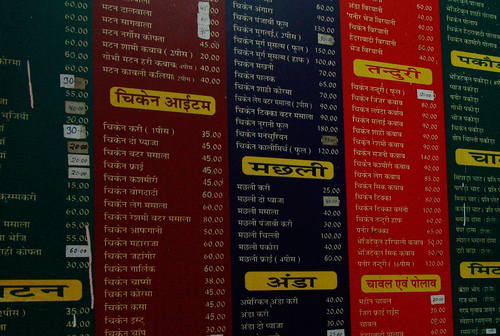
A menu in India. Photo: Mr. Fink / Flickr
The language barrier can be a challenge when vagabonding. At the time, it can seem frustrating. Usually, it’s funny in retrospect when you talk about it with friends. Technology is evolving fast, however. Smart people around the world are working feverishly to break down the walls separating us from communicating with each other. Voice and text recognition is improving at a rapid pace. Hopefully, a real-life electronic Babel fish will be invented soon.
Google has built a site called “Demo Slam,” where it invites users to submit videos of themselves using various Google Apps. A pair of girls submitted a video where they tried using Google Translate. Watch for yourself to see their results.
Personally, I’d be wary of relying totally on a machine translation. For individual words and simple sentences, it might work okay. Beyond that, I’d be concerned about outdated vocabulary and weird results coming up. I have used Google Translate to double-check my meaning when I type in Mandarin Chinese. Sometimes it throws up words that aren’t used in common, colloquial conversation.
Have you used computer translation in your travels? How did it work out? Please share your stories in the comments.
Original article can be found here: Using computer translation: does it work?
May 27, 2012
Jennifer Egan on what is lost when we lose solitude
Vagablogging :: Rolf Potts Vagabonding Blog
“When I finally did have enough money, I got a backpack and went to Europe and bought a Eurail pass. I was eighteen. I would recommend that to anybody. Although it would be different now because no one is really ever cut off from anybody anymore. To do that then was really to be severed from your ties. To make a phone call I had to wait in line at a phone place and it was not easy. …It is very uncomfortable to be alone, and I think that is why we, as a globe, have fetishized connection the way that we have. But I think that we are losing a lot by losing the experience of solitude. Many people have said that, but I feel that very viscerally. That was not the only time that I traveled that way. I went to China later, the former Soviet Union. I remember my birthday in China, I couldn’t make a phone call. I couldn’t speak to a single person I knew on my birthday. I will always remember those times because they were so extreme. I was lucky to have had those experiences. They made me know myself in certain ways that I might not have otherwise.”
–Jennifer Egan, interviewed in The Days of Yore, Apr. 19, 2011
Original article can be found here: Jennifer Egan on what is lost when we lose solitude
Living the Dream
Vagablogging :: Rolf Potts Vagabonding Blog
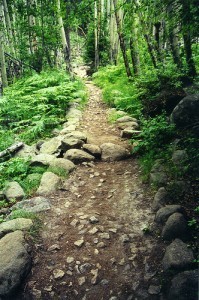
photo by Rob Lee (Flickr)
A 500-mile hike. Sound like a dream? Or a nightmare?
Or maybe you think you would love to do it, but can’t? Think again.
If I’ve learned anything from riding a bike from Alaska to Argentina, it’s that I can do most things. The impossible might take a bit longer, but I can do it. It’s all about deciding I want to.
And now I’ve decided I want to tackle another challenge – a 500-hike through the Colorado Rockies from Denver to Durango along the Colorado Trail. In fact, as you read this I am in Denver working on last-minute preparations for our departure in a few days.
Crazy? Perhaps. Scary? Oh yeah, baby. Challenging? Yes with a capital Y.
Rewarding? You bet! Wonderful in its own right? Absolutely.
But see here’s the thing: if I – a normal ordinary wife, mother, and schoolteacher – can live my dream, then you can live your dream too. It’s all about deciding you want it more than you are scared of it. Then you do it. That’s it really, that’s my million-dollar advice.
What’s your crazy/scary/challenging dream? Yes, you can live it. Decide you want to, then do it. It really is that simple.
*****
Seeing as how I’ll be out in the middle of the Rockies all summer, I will not be able to post here on Vagabonding. I’ll be back in August, but in the meantime you can follow me on Facebook, Twitter, and my blog. I make no promises that I’ll get any of those places updated with any frequency, but I’ll do my best. I’m off – to live my adventure!
PS: If you happen to be from the Denver area, we’ll be presenting a slide show and talk about our experiences cycling the Pan American Highway as a family Tuesday evening at 7 at Jefferson Unitarian Church in Golden. Hope to see you there!
Original article can be found here: Living the Dream
May 26, 2012
Vagablogging Field Report: root canals and remains in Buenos Aires
Vagablogging :: Rolf Potts Vagabonding Blog
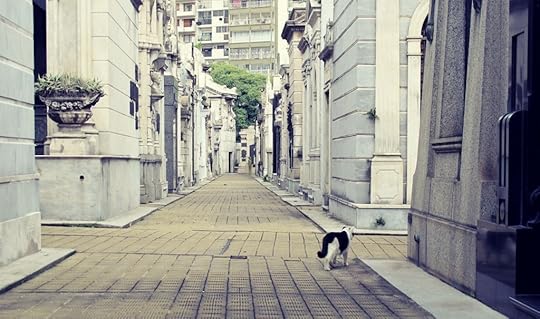 Cost/day: £25 (this has increased since my last post because my lease ran out and I moved to an AirBnB apartment).
Cost/day: £25 (this has increased since my last post because my lease ran out and I moved to an AirBnB apartment).
What’s the strangest thing you’ve seen lately?
Yesterday, my boyfriend Steve and I went to Recoleta cemetery, which was one of the most elaborate monuments to the dead we have ever seen. It’s a maze of statues and mausoleums paying homage to the city’s wealthiest families. Some are the size of small houses, with stairs leading underground to a basement of ancestors. Our favourites were graves, weathered by time, where vines and grasses had staked their claim. There were many cats, which made us ponder the old wive’s tale that cats have a foot in both this world and the next.
Describe a typical day:
This was my last week in Buenos Aires so instead of whiling away days working in cafes and saying “I can do that next week”, it was time to see the things I wanted to before saying goodbye. Steve and I aren’t very good tourists so we could have seen much more than we did, but we prefer to do what we feel like doing rather than what we think we should. That said, we enjoyed exploring some of the ‘must-sees’ including Recoleta, San Telmo Market and a tango lesson at the ramshackle La Catedral. One sight we could have done without was La Boca, a small enclave that has been preserved to look like old Buenos Aires with pretty coloured houses and people dancing the tango. Unfortunately, the area was so artificial and touristy that seeing a photo was as good as the real thing.
 Describe an interesting conversation you had with a local:
Describe an interesting conversation you had with a local:
Buenos Aires isn’t a very environmentally-conscious city so I was happy to meet some people who are encouraging the city in that direction. I was invited to the agricultural university by a fellow couchsurfer who studies organic farming. He gave me a tour of a huge allotment that he and a team have developed to provide food for the university’s students. They grow, prepare and sell all the food on campus, providing a sustainable lunch option. Volunteers from outside the university are also welcome to help on the farm.
What do you like about where you are? Dislike?
After stepping in dog poo for the umpteenth time, I can definitely say the proliferation of it on the streets of BA is one of my least favourite things about the city. It will be a great day when BA introduces poo bins.On a less smelly note, I love the people of Buenos Aires. Nearly everyone I met, from taxi drivers to my yoga teacher went out of their way to make me welcome. “Just let me know if there is anything I can do to help,” is a popular phrase.
Describe a challenge you faced:
Last week I started to get a toothache. I brushed it aside as a “bit of sensitivity” for as long as I could until I eventually conceded I had better go to the dentist to get it checked out. It was quite a novelty visiting the foreign surgery complete with trashy daytime TV, and then being treated by a dentist who looked like he’d stepped right out of a telenovela (Portenos tend to be very well polished, beautiful people). But then things took a terrible turn and I was told my tooth was infected and I needed emergency root canal surgery. Five hours in the dentist chair over two days would be a challenge anywhere in the world, and it certainly wasn’t a pleasant experience, but I was lucky to be in a modern city with excellent dental care. It was tricky not knowing what was being said as the dentist and his assistant chattered in quick-speed Spanish over my clamped-open mouth, but perhaps I was saved the torture of words like drill, needles and file. Now I have a brand new porcelain tooth, which I managed to resist having painted with a Wedgwood-style pattern.
What new lesson did you learn?
I learned the importance of checking your travel insurance documents as mine doesn’t completely cover the cost of my root canal. I would have had to pay in the UK too though so it’s not a huge loss.
Where next?
I’m writing this on the plane to El Calafate in Patagonia where we are going to see Perito Moreno glacier. I was completely dazzled the first time I saw a picture of the blue-hued ice giant so to be seeing it for real is a dream. After that, we will be doing some hiking in El Chalten and then heading to Puerto Madryn to hopefully see some whales. If you’re interested, you can follow our journey on our blog Bridges and Balloons.
Original article can be found here: Vagablogging Field Report: root canals and remains in Buenos Aires
May 25, 2012
Vagabonding Field Report: Dubai and the world’s most extravagant, well, everything
Vagablogging :: Rolf Potts Vagabonding Blog
Cost/day: $175/day. It isn’t the cheapest place to travel to and there were too many fun activities (that cost money) to not spend money, but it can be done reasonably and you only really need a few days to get a good experience.
What’s the strangest thing you’ve seen lately?
Dubai brings a whole new definition to the concept of a desert oasis. Being surrounded by nothing but desert, it has become a trade and tourism mecca, focusing on making everything as big and extravagant as possible. Seeing such a futuristic and international city in the middle of the desert was strange in itself, but snowboarding in an indoor ski resort while it was 108 F (42 C) outside was the strangest experience I had in Dubai.
Describe a typical day:
My girlfriend met me in Dubai and we started the morning off with a trip to the Burj Khalifa – the tallest building in the world. We went to the top and saw views of the entire city, including the man-made private islands shaped like the world. Afterwards, we walked through the Dubai Mall and met up with a friend who lives nearby. After grabbing a late breakfast, the three of us went to Ski Dubai, an indoor ski resort. We snowboarded for a couple hours and took a couple turns of getting into a giant cushioned ball and rolling down a snow slope. We went to the beach for a little while and took a dip in the Gulf – quite the contrast from being freezing cold and covered in snow just minutes before! We changed into some nicer clothes and headed to a delicious roof top, all you can eat sushi and seafood restaurant. After a long and fun dinner, we saw the dancing fountains and then topped off the night at Antlantis’ nightclub, which is located on the beach at the tip of the man-made Palm Islands.
Describe an interesting conversation you had with a local:
The term “local” is a unique concept in Dubai as 80% of the population is an expat. While it is easy to meet people that live there, they are very rarely from the UAE originally. I met a lot of “local” people, but I never actually found an Emirati. I spoke with them about their experience living in Dubai and everyone seemed to quickly share their opinion on how much they love it or how much they can’t wait to move back home. Either way, almost all of them viewed their stay in Dubai as temporary. I also found it interesting that because almost everyone is an expat, people rarely presume you are a tourist.
What do you like about where you are? Dislike?
I like Dubai’s drive to become an internationally renowned city. Everywhere you turn, it seems like they are saying “look how great we can be.” Seeing this perspective is quite inspiring. And while I was initially taken back by the apparent lack of local culture, I soon realized that the fact that its people were from everywhere in the world and everything, but the sand, seemed to be manmade was in fact part of their unique culture. This of course translated into fantastic restaurants and there always being something fun to do.
I dislike how spread out everything is in Dubai. I enjoy exploring cities by foot in order to get a better feel of the place and its layout, but that isn’t something you can do in Dubai. You are forced to simply go from one spot to another and ignore most of what is in between. However, at least taxis are inexpensive in Dubai and there is never a problem finding one.
Describe a challenge you faced:
I wanted to check out the famous “7-star” Burj Dubai hotel (yes, 7 out of 5), but the whole perimeter is restricted for hotel guests and those with dinner or cocktail reservations only. Since my girlfriend left the day before, I didn’t feel like spending several hundred dollars on a cocktail reservation fee just to see a hotel and have a drink by myself. I was inspired by Rolf’s “Storming The Beach” story in his recent book and decided to get creative. I convinced the hotel to hold a reservation for me and allow me to call back with payment, and then convinced the security guards of my legitimacy. After several steps executed with flawless timing, I almost made it in before being stopped because my khaki shorts didn’t meet the cocktail dress code. I thought about swimming, buying pants or finding another way in, but I realized that my motivation simply wasn’t strong enough. I accepted defeat instead and never saw this “must-see” attraction.
What new lesson did you learn?
I learned how valuable it can be to research the best connections to cities and ignore the flight search engine’s automatic routes. This enables you to create multi-city itineraries and stay in those cities for a few days. I was able to fly from a small city in Poland to Barcelona to Dublin to Dubai to Cape Town (and stay a few days in each) for actually less than it would cost to fly straight from Poland to Cape Town. Sometimes you simply need to combine the busier international hubs and local discount airlines, but also look into countries with close economic ties and former colonies in order to find cheap connections.
Where next?
In between my last field report (Extra servings of history and kielbasa in Poland) and this post, I also went to Spain and Ireland. I recently arrived in South Africa and I plan on making my way throughout East Africa, starting in Mozambique next. If interested, you can follow my trip on Facebook, Twitter or my blog.
Original article can be found here: Vagabonding Field Report: Dubai and the world’s most extravagant, well, everything
Rolf Potts's Blog
- Rolf Potts's profile
- 323 followers




